Everyone, are you familiar with Aokigahara Jukai Forest at the foot of Mount Fuji? Nowadays, Aokigahara Forest is strongly associated with being a “suicide spot” due to media coverage, giving it a spiritual power spot image. However, did you know that it was once a popular dating spot? Additionally, the forest has a relatively short history, having formed after the Heian period, making it a young forest. Despite this, it has a strong impression of being “scary.” Why is that? This time, we will introduce Aokigahara Forest and explore its mysteries.
What is Aokigahara Jukai Forest?
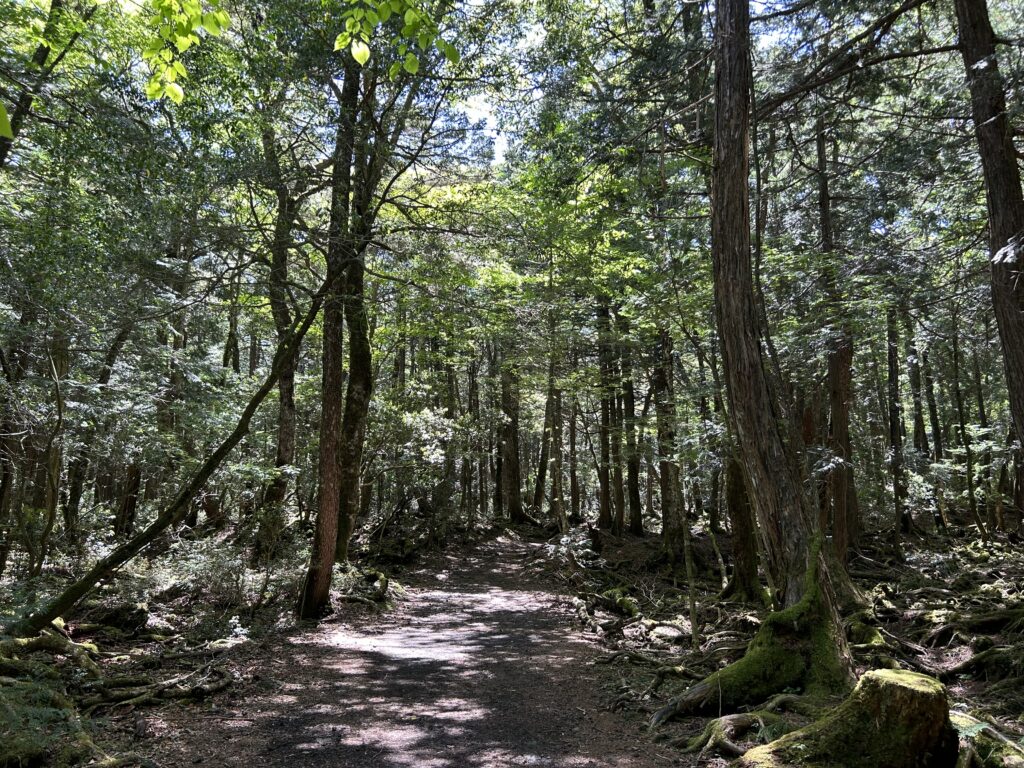
Aokigahara Forest, located in the towns of Fujikawaguchiko and Narusawa in Yamanashi Prefecture, spreads out to the northwest of Mount Fuji. Also known as the “Sea of Trees of Fuji,” the name comes from the view from the mountain summit, where the trees swaying in the wind look like waves in the sea. This forest, with a history of about 1,200 years, is a relatively new forest.
Aokigahara Forest is part of the Fuji-Hakone-Izu National Park and is designated as a national natural monument under the name “Mount Fuji Primitive Forest and Aokigahara Forest.” It is also designated as a Special Protection Area of the national park and is recognized as part of the World Cultural Heritage site “Mount Fuji – Object of Worship and Source of Artistic Inspiration.”
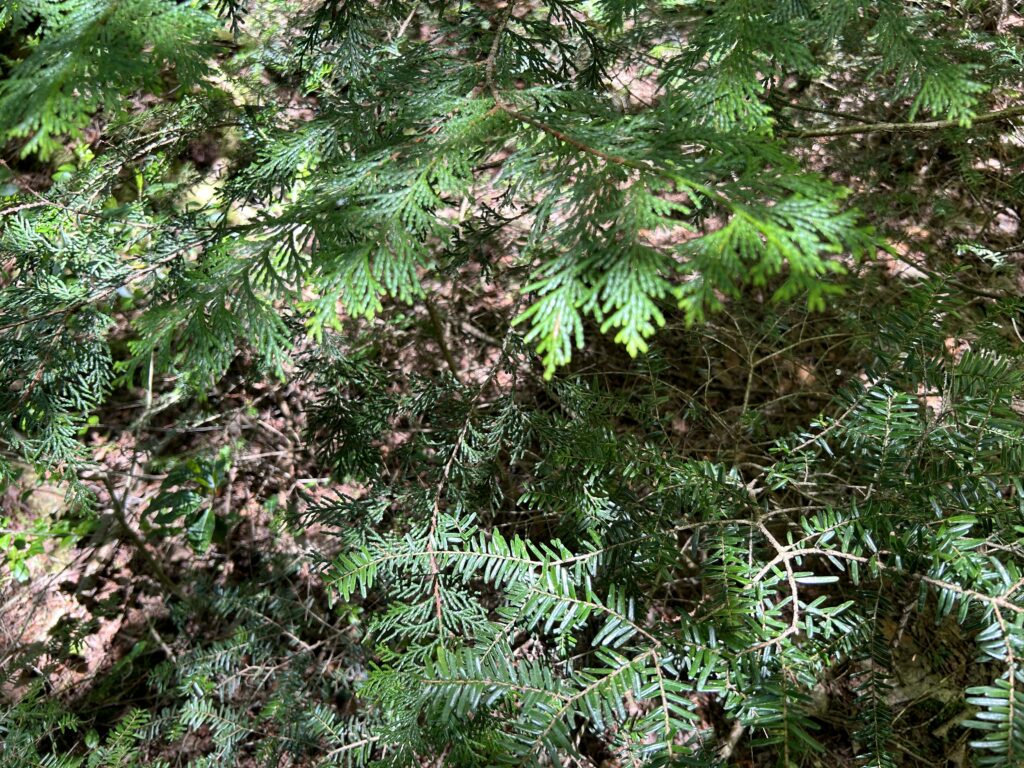
The area of this forest is approximately 30 square kilometers, and although the soil is only about a dozen centimeters thick, it is home to evergreen coniferous trees such as hemlocks and cypresses, as well as broadleaf trees like holly, Japanese andromeda, oak, Fuji cherry, and maple. Additionally, many grasses and mosses grow on the forest floor, creating a unique landscape.
The dense forest of Aokigahara provides a habitat for a diverse range of organisms, including bats living in lava caves, small animals like mice and moles, birds such as woodpeckers and bush warblers, and numerous insects like ground beetles.
Why is Aokigahara Forest Scary?
Aokigahara Forest has gained a reputation as a “suicide spot,” and this, combined with the dark and eerie atmosphere of the forest, has led to its widespread image as a frightening place. This negative image became prominent due to Seicho Matsumoto’s novel “Tower of Waves,” in which the heroine chooses Aokigahara Forest as the place to end her life in the final scenes. Before that, Aokigahara Forest was actually a popular dating spot visited by many couples. The impact of a novel’s image can be quite powerful.
Additionally, in the 1990s, a certain religious group’s facility near Aokigahara Forest also drew attention to the forest as a mysterious and spiritual place. Although the worship of Mount Fuji as a deity has existed since ancient times, the negative image established by Matsumoto’s novel, along with reports about the religious group, reinforced Aokigahara Forest’s impression as a spiritual and mystical location.
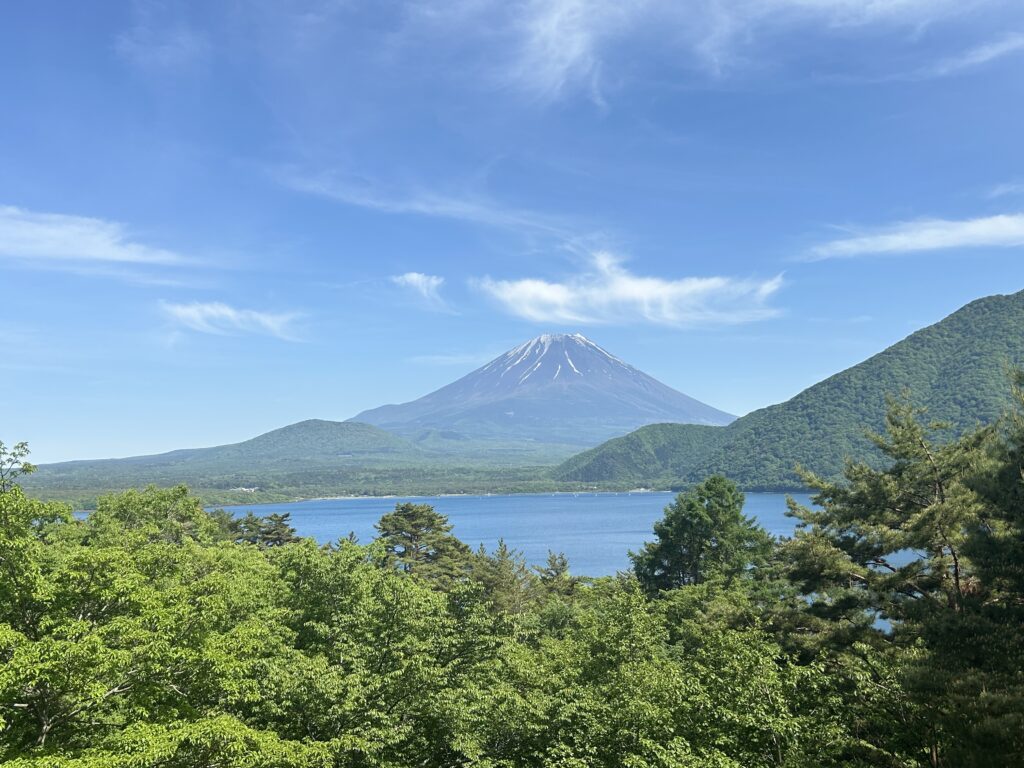
As mentioned earlier, Aokigahara Forest has a spiritual image, but did you know that as a forest, it is still relatively young, with a history of only about 1,200 years?
The formation of Aokigahara Forest was triggered by the Jōgan Eruption in 864. The year 864 corresponds to Japan’s Heian period, indicating that the forest does not have a particularly long history. This eruption occurred at Mount Nagao, a side volcano of Mount Fuji, resulting in a vast lava flow. This lava flow burned down the forest area and filled much of the large lake called “Sea of Trees” that spread across the northwestern foothills of Mount Fuji. The current Lake Motosu and Lake Sai are remnants of this, reflecting the vastness of the former lake.
On this lava field, a primeval forest covering about 30 square kilometers was formed, which became Aokigahara Forest. Over approximately 1,200 years, the lava cooled and solidified, lichens and moss grew, and the forest we see today was established. The forest is characterized by a mixed forest of coniferous trees like hemlocks and cypresses, along with broad-leaved trees such as oak. The trees take root in the thin soil over the lava and on the moss-covered fallen trees.
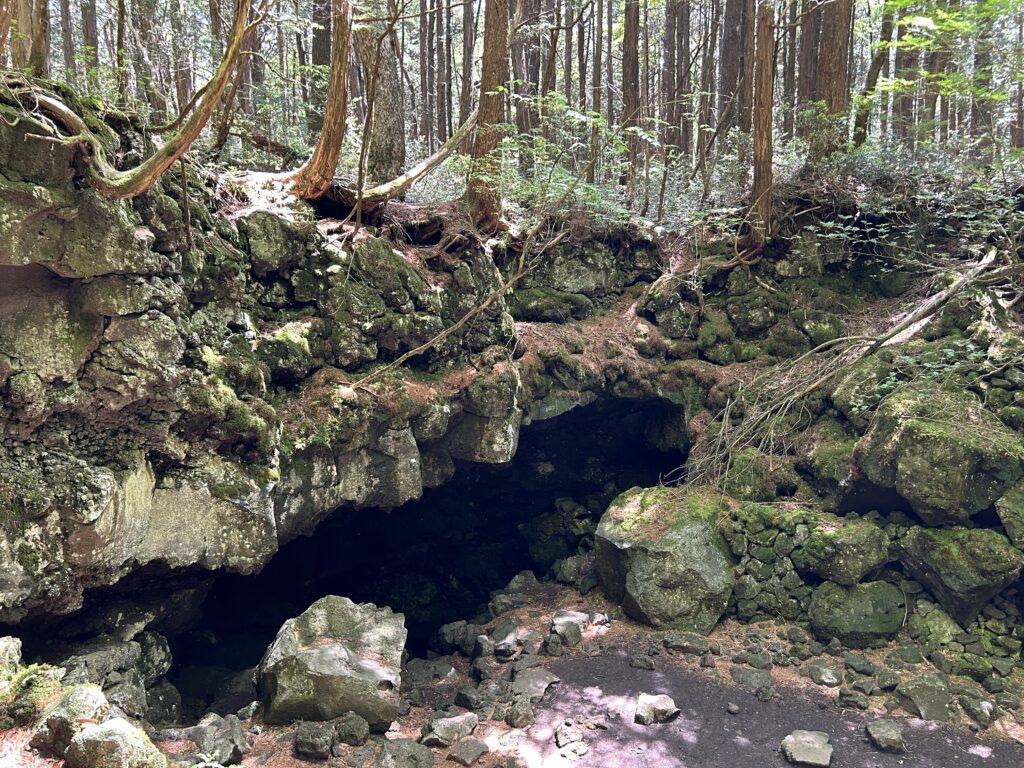
The soil in Aokigahara Forest is very thin, and the ground is made of lava, so trees cannot root deeply. As a result, many trees have their roots exposed on the surface. Additionally, trees with thick trunks cannot be supported, so there are many tall, slender trees. These characteristics create a unique landscape in the forest, which is specific to Mount Fuji with its relatively young history.
Do compasses stop working in Aokigahara Forest, making it impossible to find your way out?
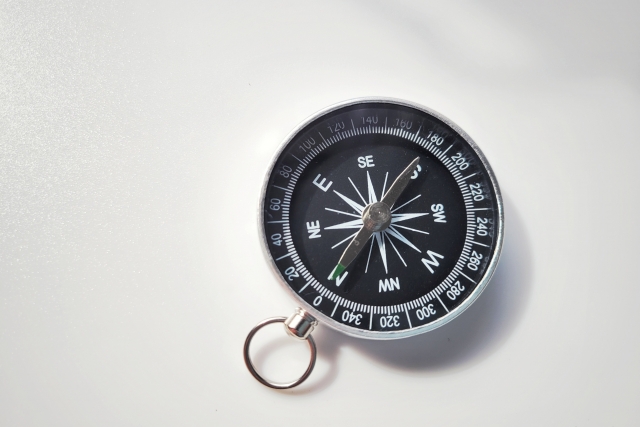
There is an urban legend about Aokigahara Forest that says, “If you wander in, your compass will go haywire, you will lose your sense of direction, and you will never be able to come out again.” This story is based on the idea that because the forest is spread over a lava field from Mount Fuji, the ground contains a lot of magnetite, which is thought to interfere with compasses and cause disorientation. However, this urban legend is just that—an urban legend. While magnetite can cause minor compass deviations, it is not enough to completely obscure the sense of direction.
In reality, the compass deviation in Aokigahara Forest is minimal, and the main reasons for losing direction are the depth of the forest and poor visibility. Alternatively, it could be the spiritual image we have of Aokigahara Forest that is clouding our perception.
Caves of Aokigahara Forest
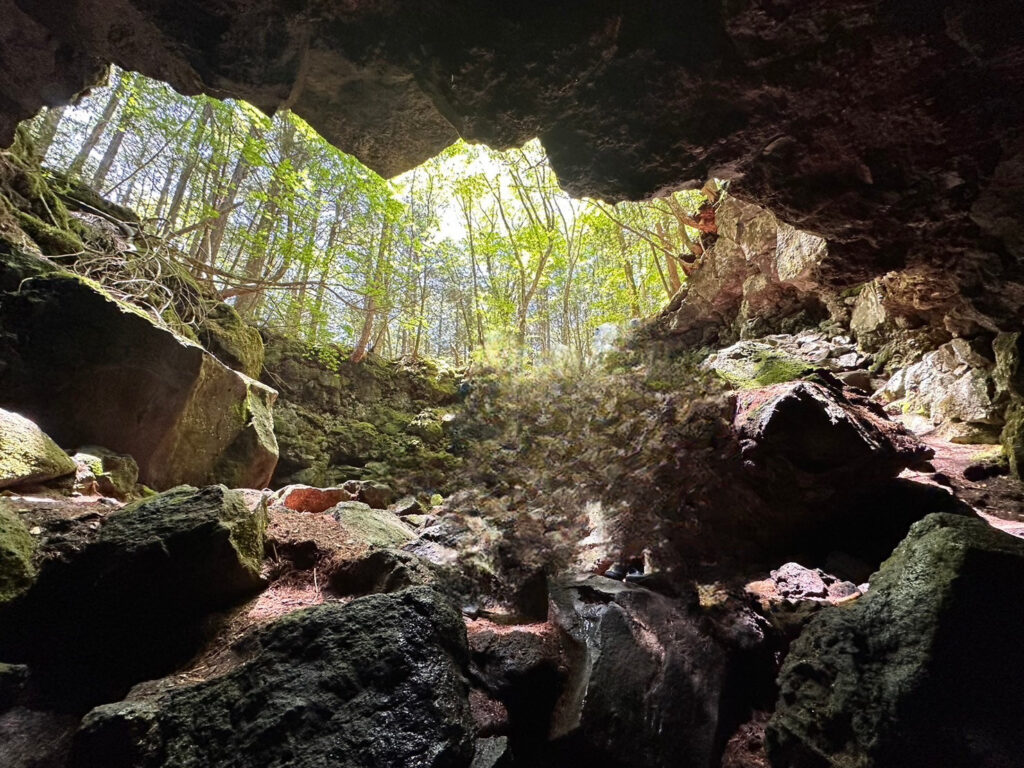
Aokigahara Forest was formed as a result of an eruption of Mount Fuji, and there are caves formed from solidified lava. Inside these caves, it is much colder compared to the surface, and even in summer, many icicles and ice remain. When illuminated, the ice crystals look incredibly beautiful. You can visit these caves by signing up for an exploration tour of the forest. Please note that you cannot enter the caves without a tour. Since there is ice everywhere, it is recommended to wear special boots that prevent slipping on the icy ground when exploring the caves.
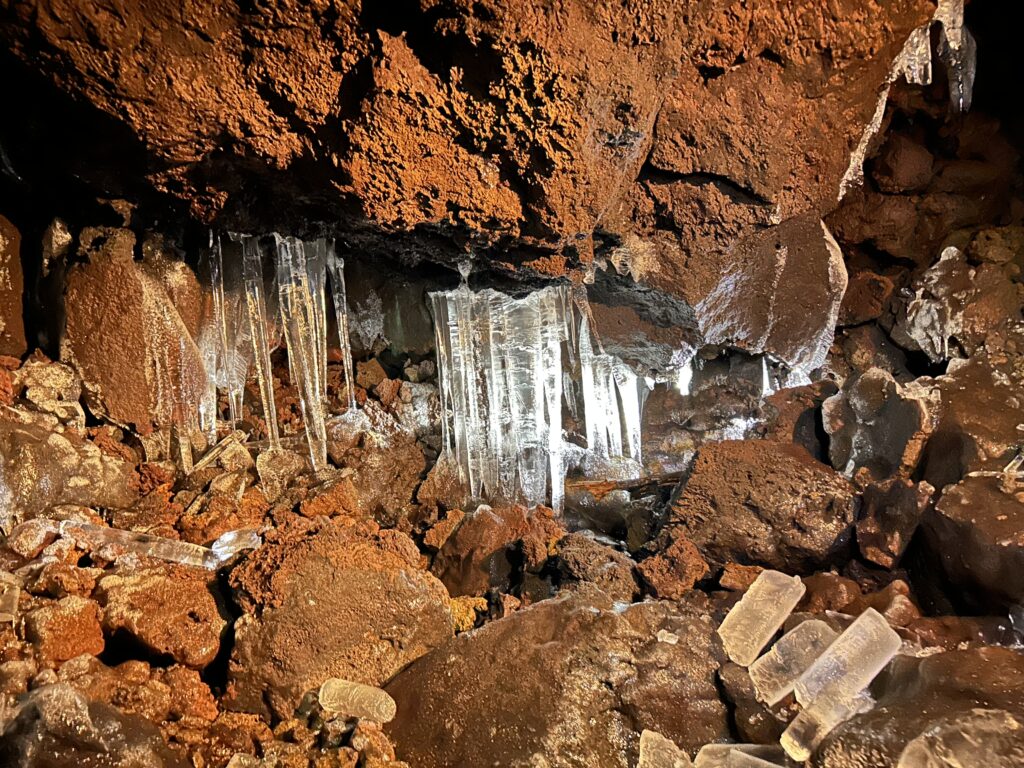
Inside the cave, the temperature was very low, and during the Meiji era, farmers used to raise silkworms in the caves. After the Meiji era, silk export became an important industry supporting the Japanese economy. Sericulture begins with the management of the eggs laid by the silkworm moths. Since silkworm eggs hatch when it starts to get warm, the number of times sericulture could be carried out was limited to once or twice a year. In the middle of the Meiji era, a technique was devised to store silkworm eggs (called “youshu”) in cool warehouses to adjust the hatching period. This made it possible to raise silkworms three to four times a year, leading to a dramatic increase in silk production.
The caves in Aokigahara Forest were also utilized as part of this technique. The cool environment inside the caves was ideal for properly storing silkworm eggs. By adjusting the hatching period of the silkworms in the natural environment of the forest, the productivity of silk was greatly enhanced. In this way, the caves in Aokigahara Forest played an important role in Japan’s sericulture industry.
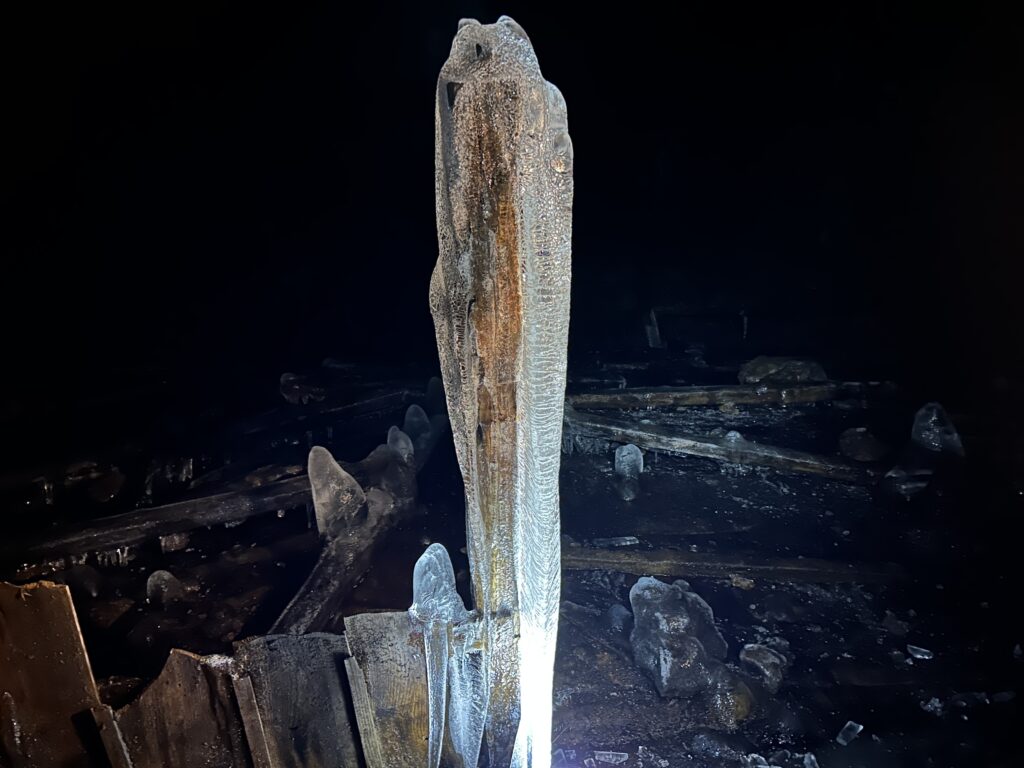
Inside the cave, you can hear nothing but the sound of dripping water. It’s a pitch-dark space where it makes no difference whether your eyes are open or closed. Because of this, the cave has been used as a place for meditation to unify the mind since ancient times. People would visit the caves in the forest to meditate and achieve mental unity as a part of their training. Although the forest now has a negative spiritual image, visiting the caves in Aokigahara Forest gives a strangely refreshing feeling, as if your mind has been cleansed.
How to Get to Aokigahara Forest
If you’re traveling to Aokigahara Forest by car, from Tokyo, take the Kawaguchiko Interchange and head towards Narusawa Village. From Shizuoka, head from Fujinomiya City towards Fujiyoshida City. In both cases, follow Route 139 until you see the sign for “Aokigahara Forest.” By the time you notice it, you’ll already be inside the forest, but you can’t enter just anywhere.
To explore, it’s recommended to use the walking path starting from the parking lot of the “Saiko Nature Center (Kunimasu Exhibition Hall and Saiko Bat Cave).” Turn at the “Narusawa Ice Cave” signal along Route 139, proceed straight, and you’ll hit a T-junction. Turn left to reach the “Saiko Nature Center.”
If using public transportation, take the Saiko Round Bus (Green Line) from Kawaguchiko Station and get off at “Saiko Bat Cave,” which is in front of the center.
At the “Saiko Nature Center,” certified guides from Fujikawaguchiko Town conduct guided tours. There are regular guided tours that can be booked on the same day and advance reservation tours that need to be booked at least two days in advance. Joining a guided tour will help you discover the natural wonders that are often overlooked.
You can also freely enjoy the forest outside of the tours. The entrance to the walking path is marked by a sign in the parking lot of the center. The path is paved with wood chips and is well-maintained. As Aokigahara Forest is designated as a national natural monument, stepping off the path is prohibited for environmental protection. Enjoy your walk while being careful not to step on tree roots.
Summary
How was it? This time, we introduced Aokigahara Forest. We talked about what kind of place it is, its history, urban legends, and the caves. Although Aokigahara Forest has a very negative image among Japan’s power spots, it was originally a dating spot for nurturing love among couples and is actually a forest with a surprisingly short history. Visiting the caves can also provide a refreshing experience.
Our site introduces various interesting histories and cultures of Japan beyond Aokigahara Forest. If you’re interested, we’d be happy if you read our other articles too!



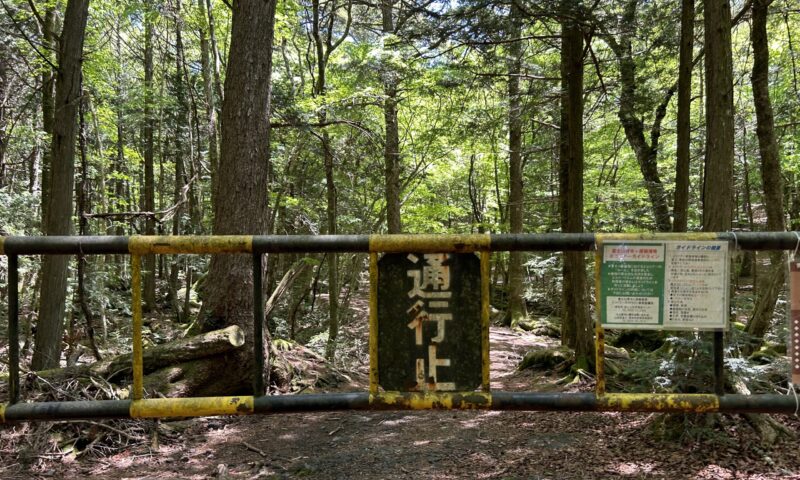
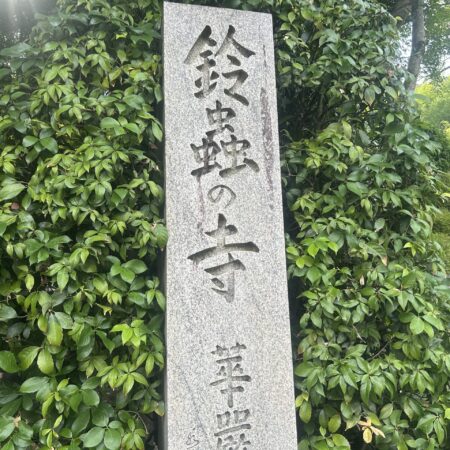
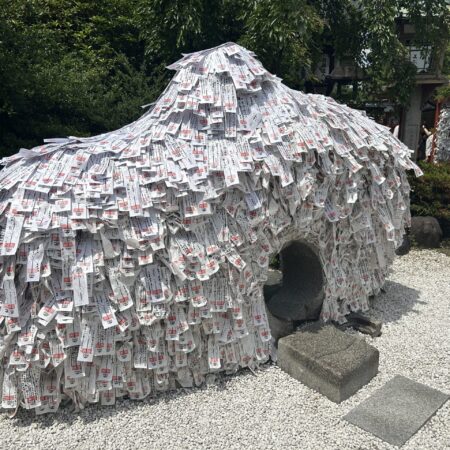


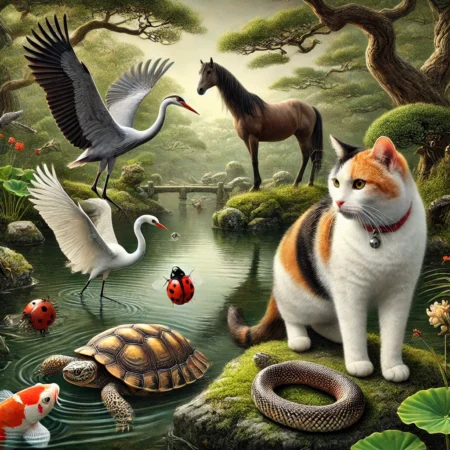
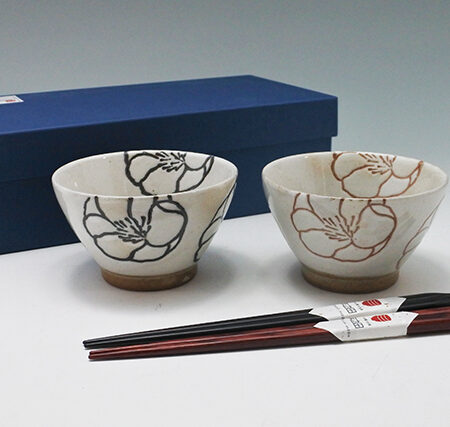
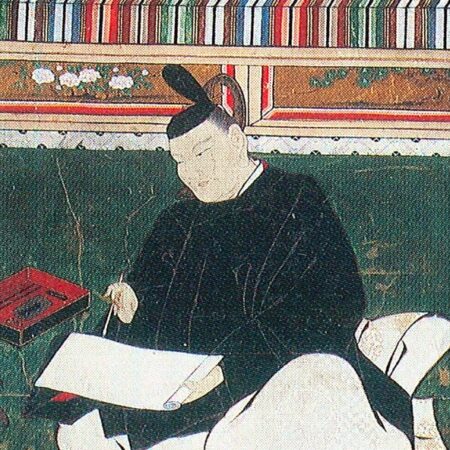
コメント